
Ryokan are traditional Japanese hotels whose roots can be traced back to the Edo Period (1603–1868). Although nowhere near as ubiquitous as they once were, there still exist thousands of such establishments, which are most often associated with relaxation, hot spas and, of course, good Japanese food and drink. Even those who would ordinarily choose a bed over a futon would be wise to experience staying at a ryokan at least once during a visit to Japan, but there are a number of dos and don’ts that visitors – both Japanese and otherwise – really ought to know before setting foot inside one.
Trip Advisor Japan has helpfully published a list of tips, designed to look like set of cards teaching the characters from the Japanese syllabary, which instructs visitors on the right way to enjoy a Japanese inn. Some are as obvious as telling guests not to take stuff home with them, but there are others that really ought to be given your full attention.
Staying in a ryokan (which, incidentally, is pronounced ryo-kan rather than rai-o-kan as Westerners unfamiliar with the Japanese language are wont to) is a lot of fun and can be tremendously relaxing, but there are a number of potential pitfalls to watch out for. Follow Trip Advisor Japan’s advice (and our additional explanations) here to ensure your visit to a traditional Japanese hotel is faux pas-free.
- You know the drill: shoes off!
It should come as no surprise to learn that a traditional Japanese hotel should stick to the age-old practice of removing one’s shoes when indoors. In the hotel reception you’ll find pairs of slippers. These are not optional, so be sure to remove your outdoor shoes and slip them on. They might not fit or be especially comfortable, but don’t worry about it; these are only for use when moving around the hotel and are to be removed when you’re in your room (don’t walk on the tatami wearing shoes of any kind), so rest assured that you won’t have to wear these often decidedly unfashionable-looking shoes for the entirety of your stay.
- Free tea!
Inside your room, you’ll find packets of tea, chawan teacups which look like tiny bowls, a little teapot and maybe some small snacks such as rice crackers to accompany them. These are completely free and will be kept stocked by the ryokan staff, so help yourself. There will usually be a small table with zabuton cushions and zaisu (lit. “sit chairs”, which look like chairs without legs) to sit around and enjoy a relaxing cup of tea.
- I am the calm little centre of the earth
As mentioned, ryokan are often considered places to unwind rather than somewhere to crash while sightseeing (though you can of course use them for that), so it’s best to think of them more like health spas than the Holiday Inn. Be extra quiet when outside your room, move around gently and don’t be “that guy” in the hallway talking loudly on his phone or shouting to his buddies. This of course goes for any decent hotel, but boisterous behaviour is considered especially irksome at a ryokan.
- Um, where’s my bed!?
First-time visitors to ryokan may be confused when they enter their room and discover neither beds nor futons. Not to worry; the staff will come to your room (usually around dinner time) and lay the futons out for you. This may seem odd, almost servant-like even, but it means you’ll have much more space in your room during the day and is all part of the ryokan experience. Tipping is not required, and many ryokan staff will find the very idea of being offered money to do their job repugnant, so keep your yennies in your pocket.
- Tokonoma-no-no
Pretty much every guest room in a ryokan will have an area called a tokonoma in it. This is purely for decorative purposes and will almost always include some form of scroll, artwork, ornate bonsai tree or flowers. It also looks like an ideal space to store a few suitcases, but is actually the worst possible place you could do so, so keep it clear at all times and soak up the Japanese ambience.
- If it’s not nailed to the floor…
You’ll find your yukata – which guests wear when back for the evening or moving around the hotel, dining room included – in the cupboard of your room, neatly folded and complete with a small cotton belt to tie it. It may look a little flimsy, but as you may have guessed you’re only borrowing it while you’re there. When you’ve finished and are checking out, be sure to leave your yukata where you found it, no matter how attached to this piece of genuinely wonderful loungewear you become during your stay. This is probably obvious to most people, but since Trip Advisor went to the trouble of telling people not to pack their yukata in their suitcase (which should be kept off the tatami, by the way) we’re guessing some ryokan have had more than a few go missing.
- Less is more
Speaking of yukata, be sure to keep it tightly closed. You’ll see a lot of Japanese folks walking around with theirs closed to the point that barely an inch of flesh below the neck is visible. It looks a bit odd, especially for somewhere you’re supposed to be relaxing, but this is actually the correct way to wear it, so keep that belt tight. (Oh and yes, you’re supposed to wear underpants beneath it!)
Last but not least, there’s the important matter of how to put on your yukata. As illustrated here, men should tie their belt at the usual hip height, women a little higher. Much more important than that, however, is that the left side should always be on top. Traditionally, corpses are dressed with their robes right-over-left, so it’s definitely not a look you’ll want to replicate.
With that little lot you should be more than ready to enjoy your visit, but if you’re still curious or worried about putting your foot in it, be sure to head over to Trip Advisor Japan for more ryokan etiquette tips!
Source/images: Trip Advisor Japan
[ Read in Japanese ]



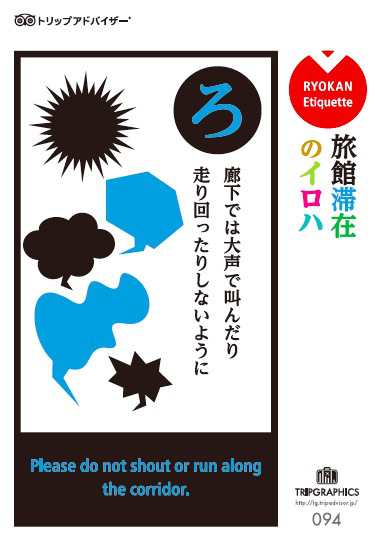
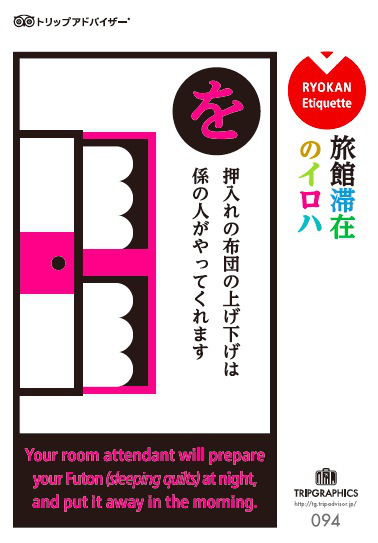
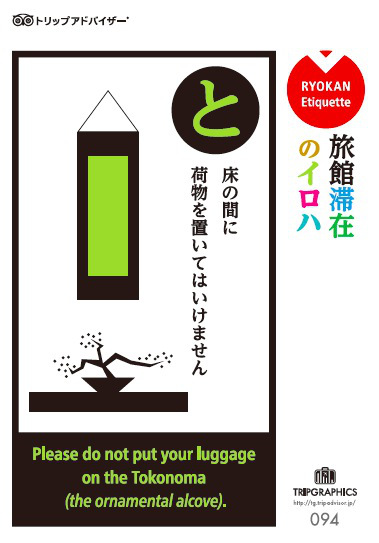
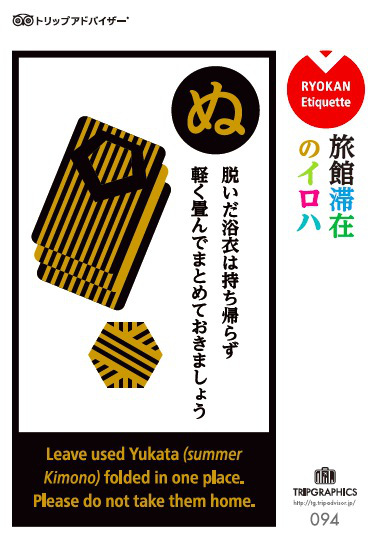
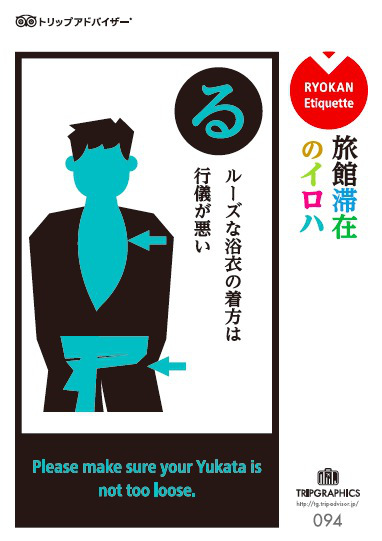
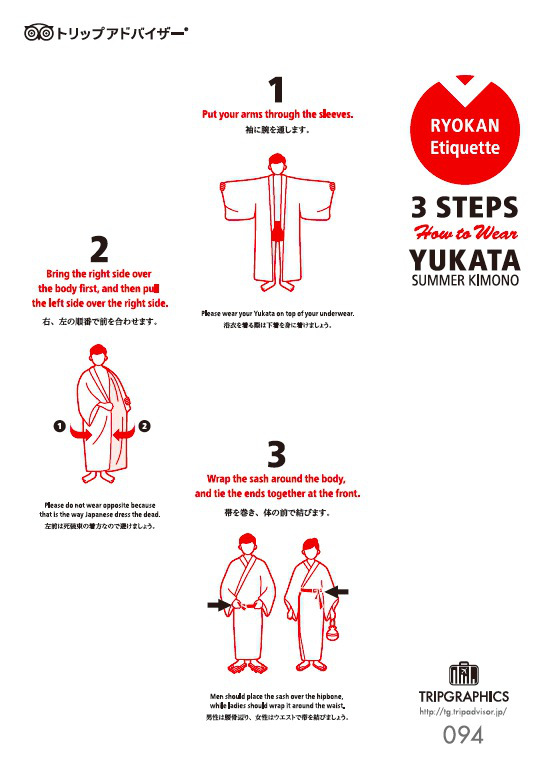
 Hilton Japan apologizes for “disrespectful” ad disparaging traditional Japanese inns
Hilton Japan apologizes for “disrespectful” ad disparaging traditional Japanese inns Survey reveals the most popular time to slip into a yukata at a traditional Japanese inn
Survey reveals the most popular time to slip into a yukata at a traditional Japanese inn How should you use the small hiroen in a Japanese ryokan hotel room?
How should you use the small hiroen in a Japanese ryokan hotel room? New Shibuya capsule hotel targets women visiting from overseas with gorgeous bath and more
New Shibuya capsule hotel targets women visiting from overseas with gorgeous bath and more Tatami etiquette: Why you should never step on the threshold of a washitsu Japanese room
Tatami etiquette: Why you should never step on the threshold of a washitsu Japanese room Japanese ramen restaurants under pressure from new yen banknotes
Japanese ramen restaurants under pressure from new yen banknotes Red light district sushi restaurant in Tokyo shows us just how wrong we were about it
Red light district sushi restaurant in Tokyo shows us just how wrong we were about it McDonald’s new Happy Meals offer up cute and practical Sanrio lifestyle goods
McDonald’s new Happy Meals offer up cute and practical Sanrio lifestyle goods Pokémon Sleep camping suite and guestrooms coming to Tokyo Hyatt along with giant Snorlax burgers
Pokémon Sleep camping suite and guestrooms coming to Tokyo Hyatt along with giant Snorlax burgers Tokyo Tsukiji fish market site to be redeveloped with 50,000-seat stadium, hotel, shopping center
Tokyo Tsukiji fish market site to be redeveloped with 50,000-seat stadium, hotel, shopping center Beautiful Red and Blue Star luxury trains set to be Japan’s new Hokkaido travel stars
Beautiful Red and Blue Star luxury trains set to be Japan’s new Hokkaido travel stars Starbucks Japan adds a Motto Frappuccino to the menu for a limited time
Starbucks Japan adds a Motto Frappuccino to the menu for a limited time French Fries Bread in Tokyo’s Shibuya becomes a hit on social media
French Fries Bread in Tokyo’s Shibuya becomes a hit on social media We tried Korea’s way-too-big King Tonkatsu Burger at Lotteria 【Taste Test】
We tried Korea’s way-too-big King Tonkatsu Burger at Lotteria 【Taste Test】 Mt. Koya planning to instate visitor’s tax to cope with huge tourist numbers
Mt. Koya planning to instate visitor’s tax to cope with huge tourist numbers All-you-can-drink Starbucks and amazing views part of Tokyo’s new 170 meter-high sky lounge
All-you-can-drink Starbucks and amazing views part of Tokyo’s new 170 meter-high sky lounge More foreign tourists than ever before in history visited Japan last month
More foreign tourists than ever before in history visited Japan last month Starbucks reopens at Shibuya Scramble Crossing with new look and design concept
Starbucks reopens at Shibuya Scramble Crossing with new look and design concept Studio Ghibli releases new action figures featuring Nausicaä of the Valley of the Wind characters
Studio Ghibli releases new action figures featuring Nausicaä of the Valley of the Wind characters Studio Ghibli glasses cases let anime characters keep an eye on your spectacles
Studio Ghibli glasses cases let anime characters keep an eye on your spectacles Is the new Shinkansen Train Desk ticket worth it?
Is the new Shinkansen Train Desk ticket worth it? New private rooms on Tokaido Shinkansen change the way we travel from Tokyo to Kyoto
New private rooms on Tokaido Shinkansen change the way we travel from Tokyo to Kyoto Beautiful Ghibli sealing wax kits let you create accessories and elegant letter decorations【Pics】
Beautiful Ghibli sealing wax kits let you create accessories and elegant letter decorations【Pics】 Studio Ghibli releases Kiki’s Delivery Service chocolate cake pouches in Japan
Studio Ghibli releases Kiki’s Delivery Service chocolate cake pouches in Japan New definition of “Japanese whiskey” goes into effect to prevent fakes from fooling overseas buyers
New definition of “Japanese whiskey” goes into effect to prevent fakes from fooling overseas buyers Our Japanese reporter visits Costco in the U.S., finds super American and very Japanese things
Our Japanese reporter visits Costco in the U.S., finds super American and very Japanese things Studio Ghibli unveils Mother’s Day gift set that captures the love in My Neighbour Totoro
Studio Ghibli unveils Mother’s Day gift set that captures the love in My Neighbour Totoro Domino’s Japan now sells…pizza ears?
Domino’s Japan now sells…pizza ears? New Japanese KitKat flavour stars Sanrio characters, including Hello Kitty
New Japanese KitKat flavour stars Sanrio characters, including Hello Kitty New Pokémon cakes let you eat your way through Pikachu and all the Eevee evolutions
New Pokémon cakes let you eat your way through Pikachu and all the Eevee evolutions Sales of Japan’s most convenient train ticket/shopping payment cards suspended indefinitely
Sales of Japan’s most convenient train ticket/shopping payment cards suspended indefinitely Sold-out Studio Ghibli desktop humidifiers are back so Totoro can help you through the dry season
Sold-out Studio Ghibli desktop humidifiers are back so Totoro can help you through the dry season Japanese government to make first change to romanization spelling rules since the 1950s
Japanese government to make first change to romanization spelling rules since the 1950s Ghibli founders Toshio Suzuki and Hayao Miyazaki contribute to Japanese whisky Totoro label design
Ghibli founders Toshio Suzuki and Hayao Miyazaki contribute to Japanese whisky Totoro label design Doraemon found buried at sea as scene from 1993 anime becomes real life【Photos】
Doraemon found buried at sea as scene from 1993 anime becomes real life【Photos】 Tokyo’s most famous Starbucks is closed
Tokyo’s most famous Starbucks is closed One Piece characters’ nationalities revealed, but fans have mixed opinions
One Piece characters’ nationalities revealed, but fans have mixed opinions We asked a Uniqlo employee what four things we should buy and their suggestions didn’t disappoint
We asked a Uniqlo employee what four things we should buy and their suggestions didn’t disappoint Princesses, fruits, and blacksmiths: Study reveals the 30 most unusual family names in Japan
Princesses, fruits, and blacksmiths: Study reveals the 30 most unusual family names in Japan Learn all about enjoying a traditional Japanese-style ryokan inn from this nine-minute video!
Learn all about enjoying a traditional Japanese-style ryokan inn from this nine-minute video! Rakuten Travel reveals the top 5 best-rated, off-the-beaten-track Japanese ryokan inns
Rakuten Travel reveals the top 5 best-rated, off-the-beaten-track Japanese ryokan inns Doll otaku’s plastic bedmate gets loving hospitality from beautiful Japanese hot spring inn
Doll otaku’s plastic bedmate gets loving hospitality from beautiful Japanese hot spring inn Low-cost Japanese inn welcomes foreign guests with hot springs, sake tastings, cosplay backdrops
Low-cost Japanese inn welcomes foreign guests with hot springs, sake tastings, cosplay backdrops Japan’s cheapest hotel charges just 130 yen (US$1.20) for a room, with a huge, no-privacy catch
Japan’s cheapest hotel charges just 130 yen (US$1.20) for a room, with a huge, no-privacy catch More than a capsule hotel, downtown Tokyo capsule ryokan is awesome, budget-friendly spot to stay
More than a capsule hotel, downtown Tokyo capsule ryokan is awesome, budget-friendly spot to stay 5 tips for staying healthy while traveling in Japan this winter!
5 tips for staying healthy while traveling in Japan this winter! Beautiful, 100-year-old Japanese guest house is so cheap, for some guests it’s free
Beautiful, 100-year-old Japanese guest house is so cheap, for some guests it’s free The Ryokan Tokyo Yugawara offers a unique writer’s retreat with a luxurious onsen
The Ryokan Tokyo Yugawara offers a unique writer’s retreat with a luxurious onsen This remote island guest house may have converted our “private rooms only” traveling reporter
This remote island guest house may have converted our “private rooms only” traveling reporter A private onsen bath with a karaoke machine is two of Japan’s best things with zero embarrassment
A private onsen bath with a karaoke machine is two of Japan’s best things with zero embarrassment Is this chic hotel in Tokyo’s Asakusa district really a capsule hotel? As a matter of fact, yes!
Is this chic hotel in Tokyo’s Asakusa district really a capsule hotel? As a matter of fact, yes! All we want for Christmas is to stay in the new Mimaru Hotel Pokémon room, opening Dec 24
All we want for Christmas is to stay in the new Mimaru Hotel Pokémon room, opening Dec 24 Traditional Japanese inn offers ultimate amenity: A cat companion to spend the night with
Traditional Japanese inn offers ultimate amenity: A cat companion to spend the night with The Story Hotel: A new concept for couples wanting some romantic private time in Japan
The Story Hotel: A new concept for couples wanting some romantic private time in Japan
Leave a Reply